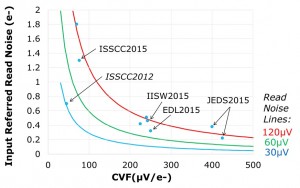Maybe it is good to remind the visitors of this blog about imaging trainings in the Spring 2016. There are 6 courses in the pipeline :
– a 2-day class to get an introduction in the world of CMOS image sensors. This class is intended for people who have almost no background in solid-state imaging. This course takes place in Taufkirchen (Munich) on June 29-30, 2016, organization through www.framos.com.
– a 5-day class if you want to learn more about imagers than just the working principles. Also this class is intended for “new-comers” in the field, but also people working already a few years in imaging can revitalize their knowledge. The course can be considered as the mother of all trainings offered by Harvest Imaging. Key to this class are the exercise sessions at the end of every day helping the participants to put the theory into practice. This course takes place on April 4-8, 2016 in Barcelona, and is organized by www.cei.se.
– a 2-day class with hands-on measurements and evaluation of an “unknown” camera. Because the participants have to perform all characterization work themselves, this course is NOT intended for people fresh in the imaging field. Preferably the course participants have a few years of experience in the arena of solid-state imaging. This course takes place in Munich, on March 30-31, 2016, organized by www.framos.com, as well as in Amersfoort, on May 26-27, 2016, organized by www.cei.se.
– a 3-day advanced class focusing on CMOS image sensors. Because the material presented is on a higher level, this course is intended for people who have a couple of years of experience in the field of digital imaging. The course is scheduled for May 23-25, 2016 in Amersfoort (Nl), organized by www.cei.se.
– a 3-day course on Digital Camera Systems. In this training the focus is less on the image sensors, but more on the processing of the signal delivered by the image sensor. The complete colour processing pipe will be explained and demonstrated by an extensive amount of images and algorithms. The participants will get a soft copy of all images shown in the course. Location will be Barcelona, date : June 14-16, organized by www.cei.se.
Looking forward to see you at one of these courses.
Albert, 27 February 2016
